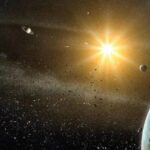NASA’s world number one James Webb space telescope discovered a new object in the universe. A recent discovery may have detected a group of failed stars known as brown dwarfs. These are present outside of our galaxy in the Small Magellanic Cloud (SMC). Astronomers said that first time they had identified such types of celestial bodies beyond the Milky Way galaxy.
What are Brown Dwarfs?
Brown dwarfs, known as “failed stars,” are like stars but emerging from a dance cloud of gas and dust. Average stars have sufficient mass to ignite fusion reactions and make stars shine, but in the case of brown dwarfs, they have insufficient mass to ignite hydrogen fusion reactions in their course, so they can’t shine. Brown dwarfs have a mass between 13 and 75 times that of planet Jupiter, which makes them unable to sustain hydrogen fusion reactions.
James Webb space telescope is a $10 billion telescope which is designed to study the universe in infrared light. Telescopes have Near-Infrared Camera (NIRCam) and Mid-Infrared Instrument (MIRI). These instruments have the power to see through thick clouds of dust that absorb visible light. This makes JWST unique in that it can reveal the structure and composition of galaxies hidden in the thick dust clouds.
The brown dwarf’s candidate has been found at the edge of Small Magellanic Cloud (SMC). Small Magellanic Cloud (SMC) is a satellite Galaxy of our Milky Way. It is located about 200,000 light years away from the Earth. This galaxy contains a young star cluster called NGC 602. This cluster is present in the gas and dust clouds, which are the prime locations for star formation.
Editor’s Recommendations
- Astounding Discovery! Zombie Star Survives the Supernova Explosion
- Hubble Telescope Captures Breathtaking ‘Stellar Volcano’ Eruption
- 1st Triple Black Hole System Found by Chance, But It Challenges the Coventional Black Hole Formation Theories
- Universe Shakedown: What Really Happens When Black Holes Merge?




